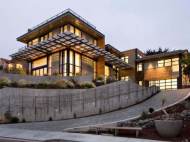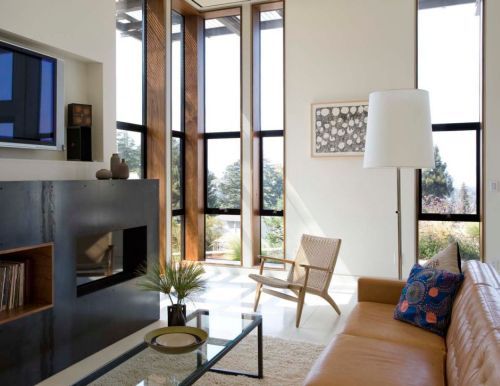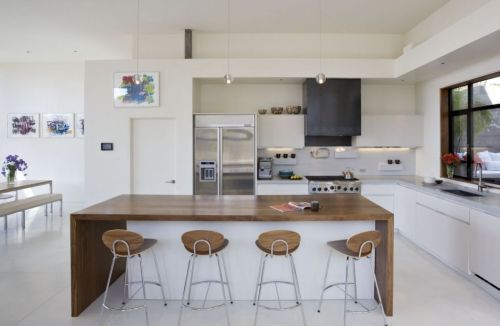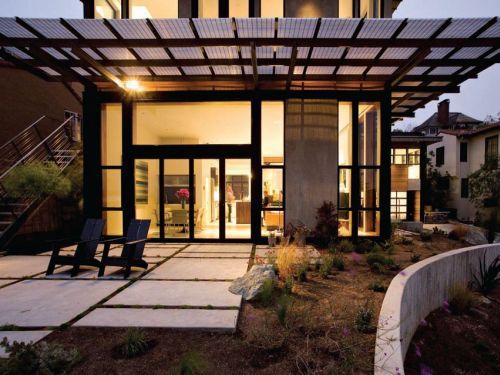Green architecture – Margarido House
 The Margarido House, built by Mike McDonald and his wife Dr. Jill Martenson, is located on a steep lot located on Oakland hills. The couple got it after it has passed through several hands from a family that preferred to move rather than rebuild after the previous house got ravaged by fire in 1991. Despite the fact the house is a bit larger than promoted values for green building, the new house achieved LEED-H Platinum certification.
The Margarido House, built by Mike McDonald and his wife Dr. Jill Martenson, is located on a steep lot located on Oakland hills. The couple got it after it has passed through several hands from a family that preferred to move rather than rebuild after the previous house got ravaged by fire in 1991. Despite the fact the house is a bit larger than promoted values for green building, the new house achieved LEED-H Platinum certification.
The L-shaped split-level house has 427 square meters (4,600 square feet) and it’s a collaborative design by several architects and designers. Bay Area architects David Wilson and Chris Parlette sited it, while details were completed in Philadelphia by one of McDonald’s brothers – architect Tim McDonald. Ian Reed from Medium Plenty interpreted the detailing and managed the interior and exterior designs.
Unlike previous owners who were daunted by the steepness of the site, McDonald got permission from Oakland’s building department to rearrange the lot so they could build low, meet new safety standards and codes, and keep views from being obstructed. Not including the building footprint, almost 90 percent of the lot is permeable (even most of the driveway has a “permeable paving system”). The house has comprehensive rainwater and groundwater catchment system where 15 thousand-liter (4,000-gallon) underground cistern captures rain, roof and groundwater for irrigation needs. It also has a 55 square-meter (600-square-foot) green roof and deck.
They carved the square footage they needed for the house from the hill and rearranged the excavated soil to extend the building pad. At least 25 percent fly ash was used in all the concrete poured for the slab-on-grade foundation, walkways and retaining walls. This arrangement also eliminated costly and environmentally unfriendly cement piers and achieved additional passive geothermal heating and cooling for the bunkered home.
The Margarido House has Solar PV panels and Solar Thermal (hot water) system. The cooling and cross-ventilation is achieved with operable windows, while heating is achieved with in-floor radiant heating. Passive solar design that incorporates aluminum and steel shade canopy, large upper-story “eyebrow” shading and floor-to-ceiling windows oriented south and west also helps the control of indoor temperature.
Indoor air-quality is controlled and monitored by a computer which also controls the lighting and power window shading system. In order to save energy, the house uses innovative LED lighting for all indoor, exterior and landscape lighting, push-button hot water D’mand system at each water fixture (no wasting water while waiting for it to get hot), and high-efficiency appliances. Shower heads and dual-flush toilets were applied in order to lessen the water usage.
To reduce home’s environmental impact, McDonald has used zero-VOC paints, recycled materials and a blown-in soy-based insulation in the walls. The house has unique fire-resistant siding made of recycled kiln shelves, locally produced tiles and counters for the kitchen and bathrooms. The comprehensive recycling and waste management plan during construction resulted in 80 percent of off-hauled waste recycled. Most of the materials were locally sourced.












Leave your response!